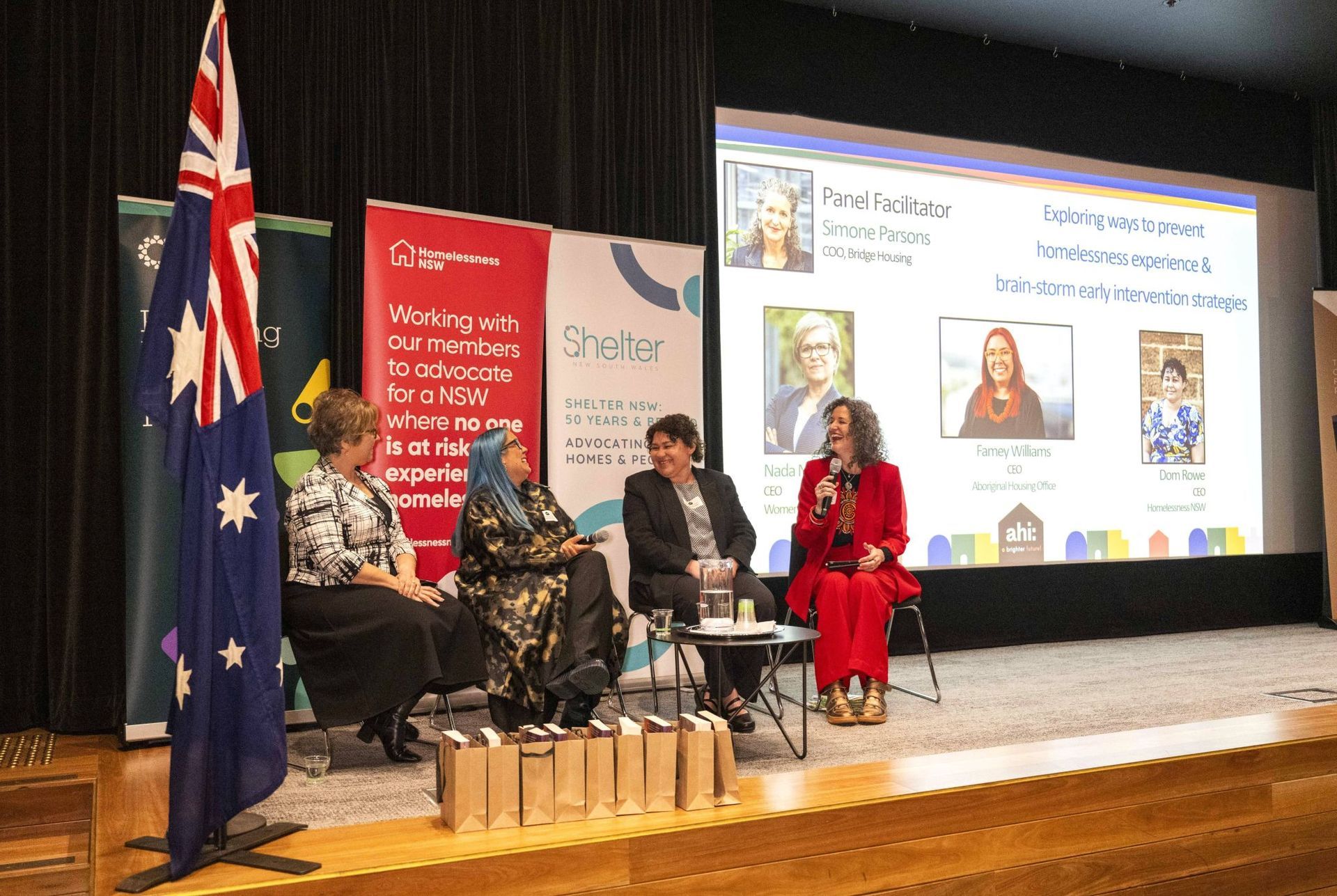Nudge Theory is a means of delivering service improvements through behavioural insights.
Ellis Blaikie explains how
Bridge Housing put Nudge Theory into practice, which won them a New South Wales ahi: Brighter Future Award 2023 for Excellence in Social Housing.
How do 'nudges' work?
Our brains use shortcuts called heuristics to help us make decisions under pressure. These heuristics consider all our previous experiences to ensure we aren’t constantly overwhelmed every time we need to make a choice.
Research has identified consistent commonalities across Western cultures, which is where the vast majority of research has been conducted. The Behavioural Insights Unit in the UK has distilled these into the ‘EAST’ framework to support the design of Nudge policy interventions:
- Easy – as humans, our default is inaction, and we're more likely to take action the less effort it requires. When designing programs and services, this means making it as easy as possible for the end users, for example, through the use of default options and low barrier processes.
- Attractive – people like to have fun and are likelier to engage with something that draws attention, offers a clear reward or that we believe is personally for us. Hand-addressed letters have an open rate of 99%.
- Social – research on social norming suggests that most people want to fit in and will take action to do so. By drawing the attention of service users to the behaviour of similar people, they are more likely to take action that aligns with the majority. Commitment devices also draw on sociability, making people more likely to follow through on an action they have previously committed to.
- Timely – we're more or less receptive to decisions at particular times, so it’s important to give users what they need, when they need it. We're more heavily influenced by immediate costs and benefits than those that will be delivered later, so drawing attention to short-term impacts can be highly effective.
The process for designing and reviewing processes using Nudge Theory includes:
- Detailed customer and staff workshopping and data analysis to understand the specific behaviour the intervention is targeting;
- Mapping the range of interventions that draw on Nudge Theory principles – this can include technological fixes, communication approaches or service delivery changes.
- Randomised control trial approach to assess the impact of the intervention – this assesses the effectiveness of the intervention and avoids large-scale implementations that don’t work;
- Broader roll-out based on the outcomes of the trial – only for interventions that are proven and deliver measurable impact.
How can it apply to housing service delivery?
In social housing, we're often required to design and deliver services to comply with complex policies and legislation. This leads to a staff and tenant experience that can be complicated, impersonal and, sometimes, even punitive. Nudge Theory offers an opportunity to put staff and tenants at the heart of service design, by identifying improvements that can be easily implemented while ensuring compliance with all relevant requirements.
"At Bridge Housing, we’ve been using Nudge Theory to deliver service improvement projects since 2021."
At Bridge Housing, we’ve been using Nudge Theory to deliver service improvement projects since 2021. To embed the approach as a way of doing business, we've prioritised projects based on impact, focusing on high-volume processes. Our leadership team receive Nudge Theory training and further build their capacity through contribution to broader projects and delivering smaller nudges specific to their roles.
Customer journey mapping has been a key strategy in Bridge Housing’s Nudge Program. Drawing on the experience of staff and tenants, processes are mapped and each touchpoint evaluated against the EAST framework to identify improvement opportunities. Clear and timely communication is key, with most projects overhauling the previous communication processes. Digital systems are also crucial in delivering operating efficiencies, with the implementation of webforms enabling us to offer tenants a self-service option while also allowing internal processes to be streamlined for staff.
"We commenced our Nudge Program with a deep dive into our management of property inspections."
We commenced our Nudge Program with a deep dive into our management of property inspections due to the low rate of first-time access and the considerable time and cost involved in rescheduling appointments. Since then, we've used the approach to review our repairs appointments, rent review communications, arrears communications and property sign-up process. All reviews have resulted in changes and improvements to the way we do our business and have improved tenant and staff satisfaction.
The outcomes demonstrate the impact of Nudge as a framework for service improvement:
- First-time property inspection – access increased from 73% to 95%, equating to over $55,000 in annual savings in staff time, staff and tenant satisfaction levels increased;
- First-time repairs access – 100% access rate compared to 90% for the control group in the trial;
- Electronic sign-ups – saved Bridge Housing approximately 45 minutes of administration time per sign-up since going live in 2021, resulting in estimated savings of over $150,000 to date and ensuring compliance with all legal requirements;
- Rent review – the proportion of tenants returning their forms on time increased from 55% to 73%, and the balance of tenants placed on market rent reduced from 10% to under 1%;
- Rent arrears management – streamlined communications and improved tenant response rate to arrears contact led to a 34% increase in the proportion of tenants on repayment arrangements;
- Hand up – streamlined the administrative process for staff and support partners using a webform and a monthly congratulatory text for participants led to a 65% increase in program uptake.
Nudge Theory is an evidence-based, replicable model of service design and should be at the core of every social housing provider's service improvement approach. Nudge puts people at the centre of service delivery, as they should be.
To learn more about how to apply behavioural insights in community housing, you're invited to join
the ahi's Applying Nudge Theory workshop on 2nd May 2024.
A better resident experience? Yes please!
Jo Leckie from
Big Picture Training further explains how Nudge Theory can be used in a social and affordable housing context.
For CHPs, the quest to enhance the resident experience goes beyond bricks and mortar—it's about fostering a sense of belonging and empowerment within communities.
At the heart of behavioural insights lies a profound understanding of human behaviour—the decisions, motivations and perceptions that shape our actions. By delving into these psychological intricacies, housing providers can gain invaluable insights into the diverse needs and preferences of residents.
Personalisation: A catalyst for connection
One of the primary advantages of behavioural insights lies in its ability to facilitate personalised experiences. Every resident has unique requirements and, by leveraging these insights, CHPs can tailor their services, support systems, and community initiatives to suit individual preferences. Whether it's offering targeted assistance programs or customising communication channels, personalisation fosters a stronger bond between residents and their housing providers.
Simplifying Processes: From complexity to clarity
Complex administrative procedures often act as barriers to effective engagement. Applying behavioural science principles enables the simplification of forms, communication channels and service structures. Streamlined processes and intuitive interfaces not only ease resident interactions but also encourage greater participation and involvement within the community.
Proactive Engagement: Anticipating needs, building trust
Behavioural insights empower providers to anticipate the needs of residents. By identifying behavioural patterns, such as maintenance requirements or support necessities, CHPs can proactively engage with residents. Timely interventions not only address concerns promptly but also establish a foundation of trust and reliability within the community.
Encouraging Sustainable Practices: Nudging towards Collective Impact
In the pursuit of sustainable living, behavioural insights play a pivotal role in fostering environmentally friendly behaviours. Simple nudges, such as highlighting energy-saving tips or waste reduction initiatives, can instigate significant
Collective Impact
within communities. By aligning behavioural insights with sustainable initiatives, CHPs contribute to a greener, more conscientious society.
The Road Ahead: Embracing change and empowering communities
The incorporation of behavioural insights isn't just an evolution in service provision—it's a revolution in community empowerment. By utilising these insights, CHPs transcend the traditional role of mere accommodation providers. They become facilitators of vibrant, inclusive communities where every resident's needs and aspirations are acknowledged and supported.
Big Picture Training works with community housing providers in the UK and Australia to embed behavioural insights as a philosophy, and will be facilitating the
ahi: Applying Nudge Theory online workshop.







